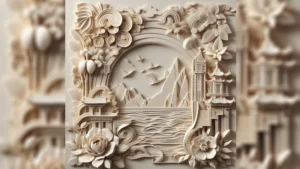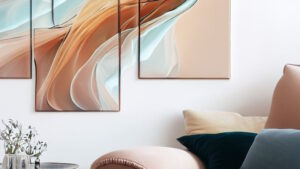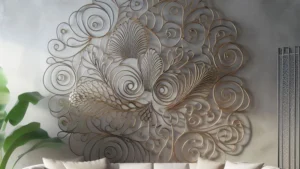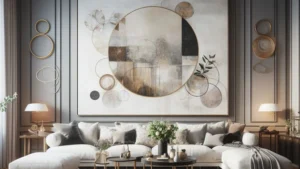We often hear the phrase “A picture is worth a thousand words”, and for Abstractionism wall art, it could not be more true.
Abstractionist wall art is a style of art that speaks volumes without having to say a single word. It is a silent language that can be interpreted differently by everyone, yet still bring joy and emotion to all who behold it.
So What Is Abstract Wall Art Style? Abstract art is a unique style of art that can be found in many different forms. It is a type of art that is not easily defined, but rather a combination of shapes, colors, and textures that work together to create a mesmerizing effect.
From simple splashes of color to intricate patterns and designs, Abstractionism wall art can bring a feeling of peace and tranquility to any living space. Read on with Nousdecor to explore such beautiful art style!
Key Takeaways
- Abstract art is a non-representational form of artwork that uses shapes, lines, colors, and textures to express emotions, feelings, and ideas.
- It has its roots in late 1800s with artists like Paul Cezanne and has surged in popularity in the 20th century with the use of color and shape.
- Abstract art comes in hundreds of styles, ranging in price from $50 to millions, and can be used for both indoor and outdoor decoration.
- When selecting abstract art, it’s important to evaluate painting techniques, look for texture and movement, and consider color scheme and size. It’s a bold statement that can enhance any room decoration and create a focal point.
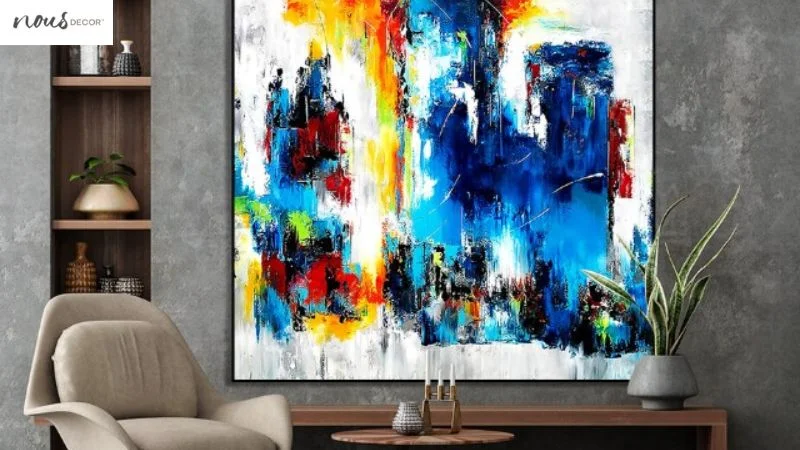
What Is Abstract Wall Art Style?
Abstract art is a style of art that is characterized by its use of shapes, lines, colors, and textures to create a non-representational, yet visually-compelling piece of artwork.
Through the making use of color, texture, shapes, lines, symbolism, and materials, Abstractionism wall art offers a unique and creative way to express emotions, feelings and ideas.
It allows the viewer to interpret the artwork in their own way, while being innovative and detail-oriented in its execution. By combining all these elements, Abstractionism wall art creates an emotion-evoking experience that transcends the boundaries of traditional art.
Through this, it has become a popular form of art that is appreciated by many. By transitioning from representational to Abstractionism, wall art has become a genre that is celebrated for its uniqueness and creativity.
History, Characteristics of Abstract Art
You’re looking at a history of creativity, stretching back centuries, that has manifested itself in the form of Abstractionism wall art. Abstract art history has its roots in the late 1800s, when artists sought to break away from traditional forms of expression.
The art movement was led by the French artist Paul Cezanne, who pioneered the use of color theory and innovative techniques to create works of art that were free from any representational elements.
The early 20th century saw a development of Abstract art, as artists embraced the use of color and shape to create unique and imaginative pieces. They experimented with different textures, forms, and dimensions to create art that was both visually stimulating and emotionally evocative.
Artists such as Wassily Kandinsky, Piet Mondrian, and Mark Rothko all made use of color theory, composition, and creative expression to create abstract masterpieces that are still celebrated today.
| Artist | Movement | Technique |
|---|---|---|
| Paul Cezanne | Post-Impressionism | Color Theory |
| Wassily Kandinsky | Expressionism | Textures |
| Piet Mondrian | De Stijl | Forms |
| Mark Rothko | Abstract Expressionism | Dimensions |
Abstract art has been an important part of the creative landscape for centuries. It has evolved and changed over time, but its essential elements of color theory, composition, and creative expression remain constant.
With its roots in the past, abstract art continues to be an exciting and inspiring form of abstract expressionism today, with the likes of expressive art with quotes. Transitioning into the next section, we will explore the different types of abstract wall art.

Types of Abstract Art
Exploring the different types of abstract artworks can be fascinating, and with hundreds of styles to choose from, there’s something for everyone. Did you know that abstract art pieces can range in price from around $50 to millions of dollars?
Abstractionism art can be used to decorate both indoor and outdoor spaces, and the pieces come in a variety of colors and textures. They can be realistic or Abstractionism, and each style offers its own unique benefits.
When it comes to abstract works, there is no limit to what you can create. From classic depictions of nature to modern art geometric abstract designs, you can find a piece that perfectly captures your style.
Incorporating texture and colors that contrast with the surrounding environment can really bring the space to life. Whether you opt for a realistic or abstract design, abstract art is sure to make a statement. Transitioning into the next section, let’s take a look at the benefits of abstract art.
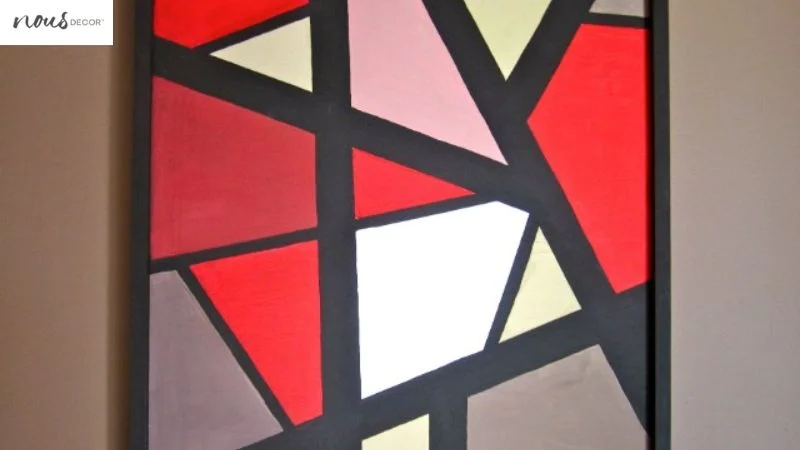
Benefits of Abstract Paintings and Sculptures
Adding canvas or whatever abstract pieces to your home can be an easy way to make a bold statement and bring the space to life. There are many benefits to be gained from incorporating this style of wall art into your decorating scheme.
First, it allows you to utilize different hanging techniques to create a unique look. This can be especially effective if you have a limited wall space, as the art can be hung in creative ways to create an eye-catching display.
Additionally, the Abstractionism wall art form can be used to create a stunning focal point in any room. With the right piece of art, you can add color, texture, and complexity to your decorating scheme.
Finally, abstract wall art can be a great way to express yourself and your personal style. Whether you prefer vibrant colors or muted tones, there is an abstract wall art piece available that will suit your individual taste.
All of these benefits make adding abstract wall art to your home a great way to enhance your room decorating. With the right piece, you can make a bold statement and bring life to your space.
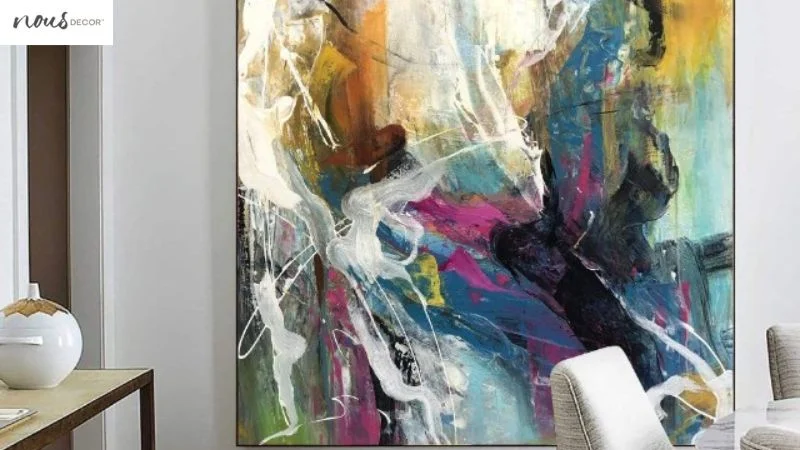
Tips for Choosing Abstract Artist and Wall Decor
When it comes to selecting the perfect abstract art for your home, there are a few tips to consider that can help you make the right choice. First, evaluate the painting techniques and acrylic painting materials used in the artwork.
Look for pieces that have texture, depth, and movement that will bring the artwork to life. Additionally, consider the color schemes used in the painting and how they will work with the color palette of your home. Finally, think about the size of the artwork and where it will look best in your home.
When buying abstract art, take the time to consider the painting techniques, color schemes, and size of the artwork. Doing so will ensure that you make the right choice for your own bespoke painted wall decor and select a piece that you will love for years to come.
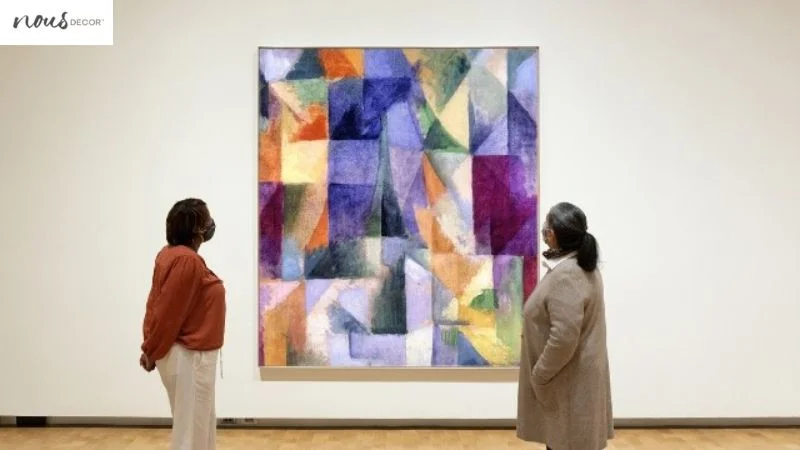
Frequently Asked Questions
Conclusion
We’ve come to the end of our journey exploring the abstract wall art world. We’ve learned that abstract art is a form of expression that can be used to make bold, beautiful statements in your home.
From its ancient roots to its many forms, abstract wall art has the power to evoke emotion and spark conversation. By using metaphors and other literary devices, we’ve seen how abstract art can be used to convey deeper meanings.
Choosing the right abstract wall art for your space can be a fun and meaningful way to personalize your home.


